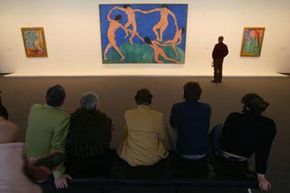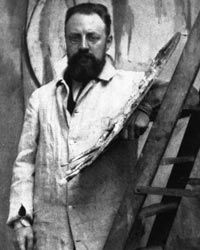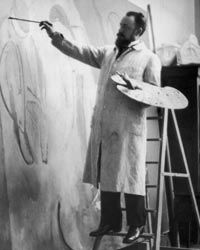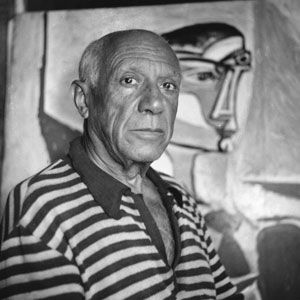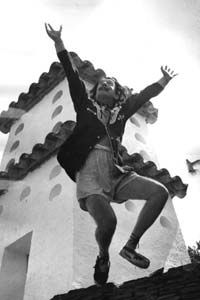Henri Matisse was the key artist in the Fauvist movement of the early 20th century, one of the first avant-garde movements in European art. Matisse came from humble beginnings and rose to the top of the international art world. His long and prolific career started before the turn of the century and spanned two world wars, several painting styles and art media from painting to sculpture to paper cutouts. Matisse made color a key element in his paintings. He felt that the colors could strongly affect people's feelings, independent of form, and that "the chief function of color should be to serve expression as well as possible" [source: Matisse].
Matisse's artwork earned him great acclaim, but critics also ridiculed him and even accused him of hedonism. Many people poked fun at Fauvism for its "childish" qualities, and the public debated whether it was true art or merely decoration [source: Harrison]. One emotion Matisse's work never inspired was boredom; people around the world had (and still have) very strong reactions to Matisse's work. After all, how many artists have been burned in effigy at an international art exposition, as Matisse was at Chicago's Armory Show in 1913 [source: PBS]?
Advertisement
While some people disliked Matisse's work, others heaped him with honors and praise. France honored Matisse in 1925 by making him a chevalier, the lowest ranking member of the Legion of Honor. Matisse received first prize at the Carnegie International Exhibition in Pittsburgh in 1927, and Pablo Picasso arranged for Matisse's work to be exhibited at the Salon d'Automne in 1944 to celebrate France's liberation from Nazi rule [source: Encyclopedia of World Biography].
Beneath all the hoopla, Henri Matisse was a quiet, serious man of simple habits. He grew from a dreamy boy who found beauty in the outskirts of his town -- where he watched the birds, looked for blooming wild violets, and played with his friends among the ruins of a medieval castle -- into a prolific artist with a love of color and a seemingly endless supply of inspiration. Matisse never lost the feel of the Earth and nature that he cultivated in his childhood, and nature was a favorite theme of his art throughout his life [source: Spurling].
What made Matisse tick, and what was it about his work that got such strong reactions from people around the globe? Read on to learn all about Henri Matisse.
Advertisement
